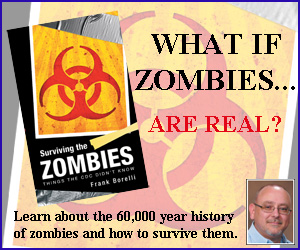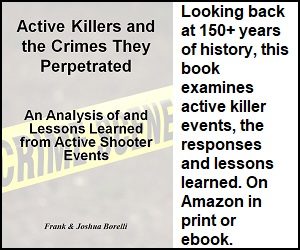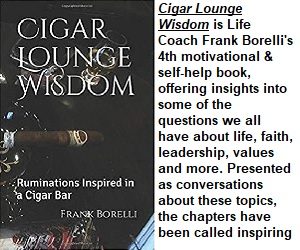This article may not apply equally to all generations who read it. It will not necessarily apply equally to military veterans versus those who haven’t served. Keep in mind, as you read, that the purpose is to identify two different outlooks toward fighting and the challenge that can face law enforcement professionals as they have to decide when which outlook is necessary and how they justify the decision.

 First let’s discuss the “fights” that occurred in elementary school. Now, understand that there haven’t been as many of these since the mid1990s as there were prior to that. In 1994 the “zero tolerance” policy was put into effect and any child fighting in school – even if it was in self-defense – was punished. What that resulted in was students who were taught that it was wrong to defend themselves, potentially creating willing victims in our society. Prior to that time, fights happened. Sometimes both students involved were punished but sometimes the aggressor was punished and the person who defended himself was not. Either way, the fight didn’t have an end goal of permanent or potentially life-threatening damage. Bloody lips, black eyes, nose bleeds and, on rare occasion, the broken nose was what resulted from those fights. No one was trying to kill anyone, cripple anyone or permanently disfigure them. Usually these fights resulted either from anger or bullying. (And if the bully was the one that ended up with the busted nose it usually deterred them from future bullying behavior.)
First let’s discuss the “fights” that occurred in elementary school. Now, understand that there haven’t been as many of these since the mid1990s as there were prior to that. In 1994 the “zero tolerance” policy was put into effect and any child fighting in school – even if it was in self-defense – was punished. What that resulted in was students who were taught that it was wrong to defend themselves, potentially creating willing victims in our society. Prior to that time, fights happened. Sometimes both students involved were punished but sometimes the aggressor was punished and the person who defended himself was not. Either way, the fight didn’t have an end goal of permanent or potentially life-threatening damage. Bloody lips, black eyes, nose bleeds and, on rare occasion, the broken nose was what resulted from those fights. No one was trying to kill anyone, cripple anyone or permanently disfigure them. Usually these fights resulted either from anger or bullying. (And if the bully was the one that ended up with the busted nose it usually deterred them from future bullying behavior.)
Second, let’s consider the fights engaged in by members of our military. In their line of duty, the end goal of that fight may have been the incapacitation or death of the enemy – dependent on mission objective and circumstances. The greater extreme of end result motivates those engaged in such to use greater violence with the specific goals of permanent injury, life threatening injury, or permanently disabling injury. The reality is that those engaged in such encounters have no choice unless they are willing to accept all that potential damage as a result of losing the fight. Both combatants involved are aware of the consequences of they hold back, aren’t fast enough, aren’t strong enough or simply aren’t willing enough to do the harm necessary to accomplish their mission.
 Now let’s discuss the physical conflicts (fights) that law enforcement professionals engage in, why, how the goals can change from moment to moment and how the public might perceive what they see – which might be vastly different from the reality perceived by those engage in the fight.
Now let’s discuss the physical conflicts (fights) that law enforcement professionals engage in, why, how the goals can change from moment to moment and how the public might perceive what they see – which might be vastly different from the reality perceived by those engage in the fight.
I start with the assumption that no law enforcement professional working the streets wants to get in a fight. During my 40 years in uniform I’d have always been happy to have those I had to arrest simply comply with my commands and go peacefully into the handcuffs. That’s far from reality though and there were plenty of times when I said, “You’re under arrest,” and was immediately attacked OR, at a minimum, violently resisted. At that point, my reality changed from non-violent arrest to either fighting someone into handcuffs or defending myself from a violent attack by the subject who is trying to avoid lawful arrest.
My outlook in that fight, and the outlook of every officer in such a circumstance, was that the purpose of the fight was to secure the suspect in handcuffs. There are numerous legal and policy controls on the force that can be used to accomplish that goal and, inevitably, they all boil down to, “…that minimum force necessary to effect the arrest.” THAT MINIMUM FORCE is determined by the actions of the subject resisting the arrest.
 The challenge is this: dependent on the actions of the subject, there may come a point where s/he is no longer being perceived as simply resisting arrest but is actively attacking the officer with the intention of doing permanent, life-threatening bodily harm. At that point, the officer and subject are no longer in a fight – one to put handcuffs on and the other to avoid such – but they are in the ugliest of fights: to determine victor and vanquished. The worst possible outcome is that one will live and one will die, both of them believing that the death of the other is the preferred outcome.
The challenge is this: dependent on the actions of the subject, there may come a point where s/he is no longer being perceived as simply resisting arrest but is actively attacking the officer with the intention of doing permanent, life-threatening bodily harm. At that point, the officer and subject are no longer in a fight – one to put handcuffs on and the other to avoid such – but they are in the ugliest of fights: to determine victor and vanquished. The worst possible outcome is that one will live and one will die, both of them believing that the death of the other is the preferred outcome.
To bystanders, not aware of the officer’s perception of imminent potential death, the officer’s actions may seem extreme or unwarranted. Fighting to protect your life is far more aggressive and potentially more violent than fighting to arrest someone. What the public either doesn’t understand and refuses to accept is that the person being arrested gets to decide what outlook the officer has in the conflict: is this an arrest or a fight to survive?
I am all too aware that in today’s society, largely due to the hyper-sensationalized reporting on a very small number of events, many people believe that every arrest situation presents a fight for survival on the part of the subject being arrested. This outlook is based on those tragic events where a subject dies during the arrest process or soon afterward in police custody. This outlook does not take into account the hundreds of thousands of arrests that are made peacefully, or without permanent bodily harm to the arrestee every year all across the United States.
 It’s my belief that this outlook… this perspective and understanding, needs to be communicated clearly to the communities we serve. It needs to be made clear that the law enforcement preference is for everyone arrested to be peaceful and compliant. The place to decide whether or not it’s a lawful and justified arrest is NOT during the arrest process, but instead during the hearings and trials period in our court system. That is, in fact, why our court system exists.
It’s my belief that this outlook… this perspective and understanding, needs to be communicated clearly to the communities we serve. It needs to be made clear that the law enforcement preference is for everyone arrested to be peaceful and compliant. The place to decide whether or not it’s a lawful and justified arrest is NOT during the arrest process, but instead during the hearings and trials period in our court system. That is, in fact, why our court system exists.
It’s my hope that this is read by both law enforcement professionals and members of the community we serve. It’s imperative that those we serve understand our goals and motivations and don’t fall prey to the hyper-sensationalized outlook promoted by those who profit from such – that being that law enforcement officers everywhere are violent, blood thirsty and bigoted people simply pumping their egos by abusing the power of the badge. That simply isn’t so and it falls to use to prove that to the public.
